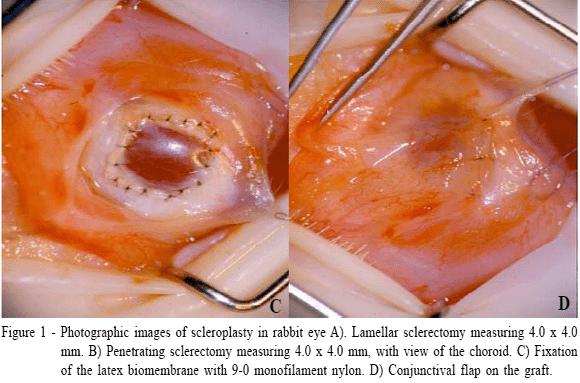The objective of study was to investigate the effects of natural latex with 0.1% of polylysine on lamellar and penetrating scleroctomies in rabbits. Two groups of twelve rabbits each (lamellar GI and penetrating GII) were studied. Scleral square incisions near the limbus were performed on the left eye of each animal. The latex biomembrane was fixed to the recipient sclera and it covered with a conjunctival flap. The clinical evaluations were followed for 60 days. Aplannation tonometry, binocular indirect ophthalmoscopy and slit-lamp biomicroscopy were performed during evaluation. Bright field microscopy and polarization microscopy were employed. Blepharospasm, graft infection, mucoid ocular discharge and chemosis were not observed in either treatment group. The conjunctival hyperemia varied from moderate to hardly noticeable. The postoperative IOP was not statiscally significant, comparing to the preoperative IOP, for GI and GII. The histopathology by polarization microscopy showed that the neoformed tissue was primarily dependent on adjacent vascularized tissues and was constituted by collagen type III. Both groups presented optimum graft adhesion to the receiving sclera. The natural latex biomembrane with 0.1% polylysine constitutes a new alternative for scleral reconstruction. Furthermore, this is a durable material, easy to obtain and manipulate.
biomaterial; graft; healing; sclera; scleroplasty






